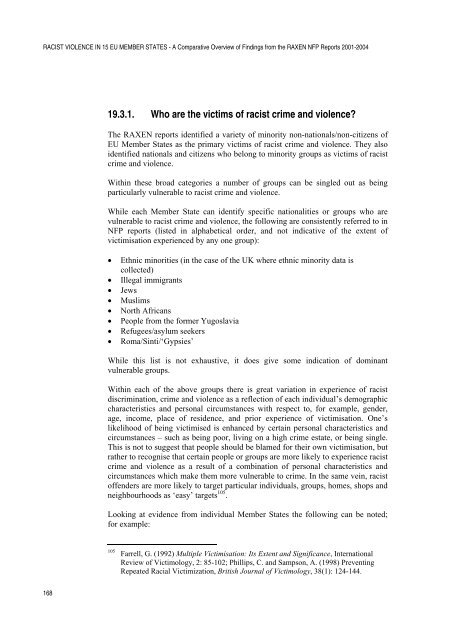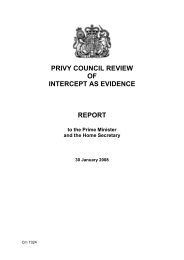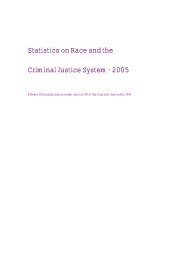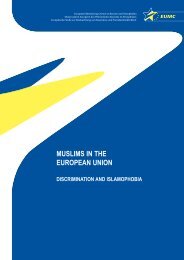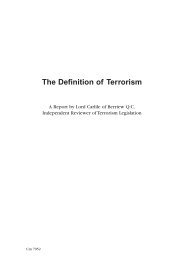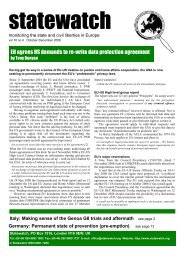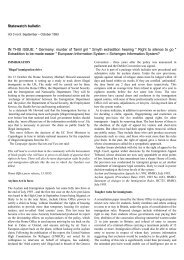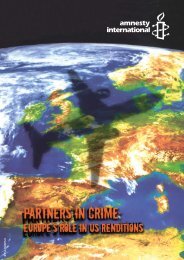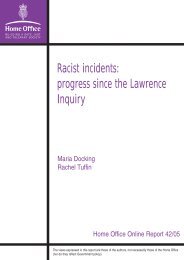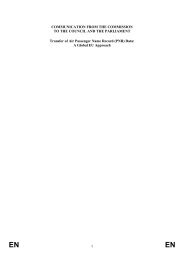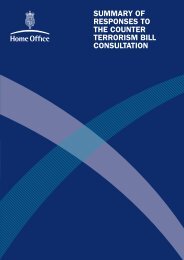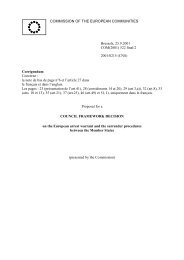RACIST VIOLENCE IN 15 EU MEMBER STATES - Cospe
RACIST VIOLENCE IN 15 EU MEMBER STATES - Cospe
RACIST VIOLENCE IN 15 EU MEMBER STATES - Cospe
You also want an ePaper? Increase the reach of your titles
YUMPU automatically turns print PDFs into web optimized ePapers that Google loves.
<strong>RACIST</strong> <strong>VIOLENCE</strong> <strong>IN</strong> <strong>15</strong> <strong>EU</strong> <strong>MEMBER</strong> <strong>STATES</strong> - A Comparative Overview of Findings from the RAXEN NFP Reports 2001-2004<br />
19.3.1. Who are the victims of racist crime and violence?<br />
The RAXEN reports identified a variety of minority non-nationals/non-citizens of<br />
<strong>EU</strong> Member States as the primary victims of racist crime and violence. They also<br />
identified nationals and citizens who belong to minority groups as victims of racist<br />
crime and violence.<br />
Within these broad categories a number of groups can be singled out as being<br />
particularly vulnerable to racist crime and violence.<br />
While each Member State can identify specific nationalities or groups who are<br />
vulnerable to racist crime and violence, the following are consistently referred to in<br />
NFP reports (listed in alphabetical order, and not indicative of the extent of<br />
victimisation experienced by any one group):<br />
• Ethnic minorities (in the case of the UK where ethnic minority data is<br />
collected)<br />
• Illegal immigrants<br />
• Jews<br />
• Muslims<br />
• North Africans<br />
• People from the former Yugoslavia<br />
• Refugees/asylum seekers<br />
• Roma/Sinti/‘Gypsies’<br />
While this list is not exhaustive, it does give some indication of dominant<br />
vulnerable groups.<br />
Within each of the above groups there is great variation in experience of racist<br />
discrimination, crime and violence as a reflection of each individual’s demographic<br />
characteristics and personal circumstances with respect to, for example, gender,<br />
age, income, place of residence, and prior experience of victimisation. One’s<br />
likelihood of being victimised is enhanced by certain personal characteristics and<br />
circumstances – such as being poor, living on a high crime estate, or being single.<br />
This is not to suggest that people should be blamed for their own victimisation, but<br />
rather to recognise that certain people or groups are more likely to experience racist<br />
crime and violence as a result of a combination of personal characteristics and<br />
circumstances which make them more vulnerable to crime. In the same vein, racist<br />
offenders are more likely to target particular individuals, groups, homes, shops and<br />
neighbourhoods as ‘easy’ targets 105 .<br />
Looking at evidence from individual Member States the following can be noted;<br />
for example:<br />
105<br />
Farrell, G. (1992) Multiple Victimisation: Its Extent and Significance, International<br />
Review of Victimology, 2: 85-102; Phillips, C. and Sampson, A. (1998) Preventing<br />
Repeated Racial Victimization, British Journal of Victimology, 38(1): 124-144.<br />
168


